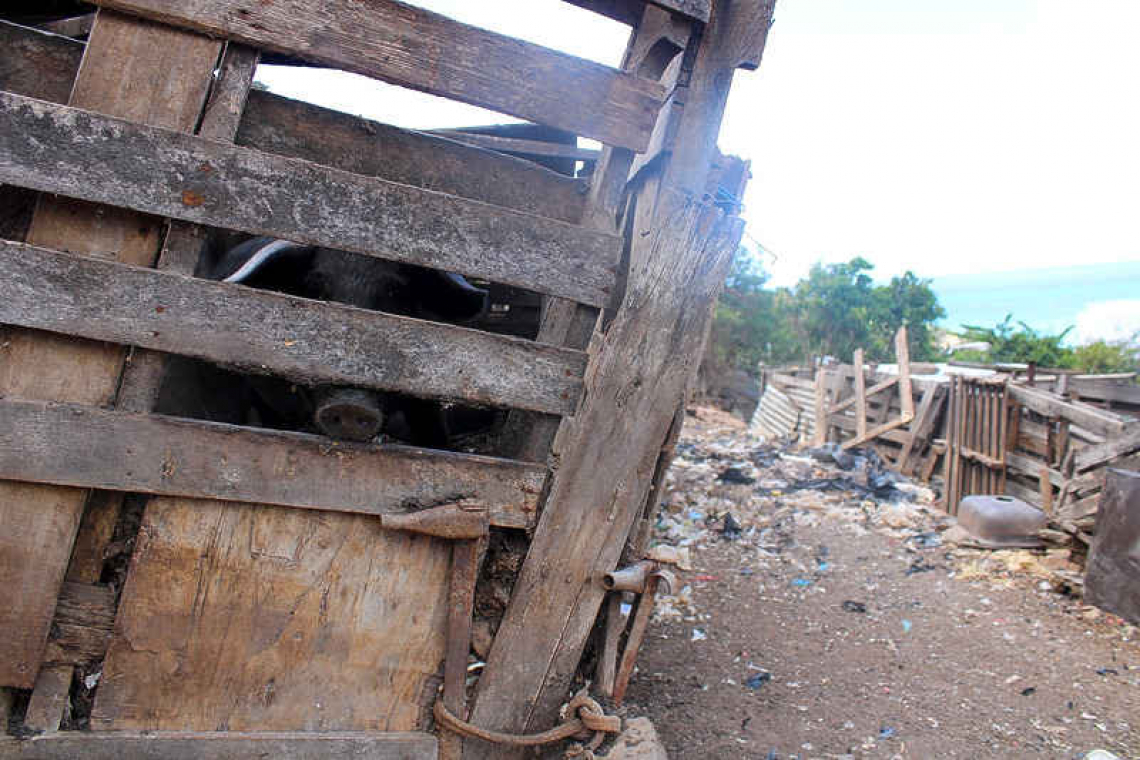The pigs live on layers of waste, the terrain looks like a landfill.
PHILIPSBURG--A stone’s throw from Bell’s Lookout point on Cole Bay Hill, on the hill slope, dozens of garbage-fed pigs sit in pens of pallets and waste wood. On Saturdays, pigs are slaughtered on the spot. The meat is sold all over the island.
From Cay Bay Road, near the NV GEBE power plant, an unnamed road winds through a disorderly neighbourhood of self-built cottages, where Spanish and Patois are the most widely-spoken languages. At the end of the narrow street, with slums left and right, the pavement turns into a dirt road that leads to the foot of the hill.
Behind a fence of pallets, a few goats walk on a bare terrain. A path leads up the hill to a hut with next to it a jumble of yellow, blue and white plastic containers next to a barrel of water. The area is littered with garbage.
A weathered old man pushes a bloodied wheelbarrow up the path. A few dozen metres away from the hut are buckets of blood and a box with intestines next to a pallet on which half a pig carcass lies. A sinewy man cuts firmly into it with a butcher’s knife.
From under a tree, a Spanish-speaking elderly man watches as the helper throws pieces of meat into the blood-stained wheelbarrow. A swarm of flies lands on the meat. The helper braces himself, lifts the wheelbarrow and pushes it down the path towards the hut.
Fifteen minutes later he is back for the next load of pork. When asked who the meat goes to, the Spanish-speaking man with the butcher’s knife proudly replies: “People everywhere on the island! We have clients from Maho, Cupecoy, Pointe Blanche.” The elderly man under the tree comments: “In Pointe Blanche there are many pigs too! Hundreds!”
The trail on Cay Bay Hill, toward the St. Maarten national flagpole, ends at a pallet-wood gate that provides access to a pallet-fenced area that looks like a landfill. Here and there are pig pens made of pallets and waste wood covered with old zinc plates.
Apart from the noise of traffic on the hill, it is remarkably quiet: the pigs make no noise and hardly move. Tightly packed in the small spaces, the pigs have shallow, accelerated breathing due to heat stress. It is almost noon; the sun is burning brightly.
A tour of the site shows that there is no drinking water in any of the pens. The water barrels present on the site are also empty.
A young black pig appears among the piles of rubbish. When approached, he quickly crawls under a pallet wall, back into a space where there are six pigs of the same size. A little later they have all wriggled themselves out of the pen and walk freely on the terrain.
It is these piglets that roam the hill, up to Bell’s Lookout Point, attracted by the smell of the feed in the cat feeding station near the parking lot. They repeatedly manage to empty the bowls that are placed there for stray cats in the area.
No large stray pigs are spotted in the area. The adult pigs are all confined to their pens on the dumpsite.
According to a reliable source, there are about 3,000 pigs on Dutch St. Maarten that are garbage-fed. Their feed is sourced on the dump on Pond Island, from garbage bins and from local supermarkets. Apart from rotting fruit and vegetable waste, the animals are also fed cardboard and plastic.
It became known in 2014 that meat from pigs in Curaçao contains dioxin as a result of feeding waste products and burning waste near pigs. The presence of dioxin in locally-sourced pork was confirmed by research in 2017: 17 of the 18 test samples were found to contain too-high concentrations of dioxin.
Dioxin is known to affect the immune system, brain development and reproduction; it is especially dangerous for the unborn child. In high concentrations, dioxin is carcinogenic.
There is no laboratory on St. Maarten where samples of animal products can be tested for the presence of toxins, hormones and bacteria that are harmful to human health. St. Maarten also does not have a meat judge who monitors the quality of locally-sourced meat and imported meat.
Dutch St. Maarten does not have any legal guidelines and regulations for the keeping and slaughter of pigs. The relevant legislation is limited to the National Ordinance containing regulations on the slaughter of cattle and the sale of meat. According to Article 1 of this National Ordinance, no cattle may be slaughtered for the purpose of being sold without the person concerned having obtained prior authorisation from the Minister of Justice.
The pigs on the Bell family’s property on Cay Bay Hill are bred by residents of the nearby neighbourhood. Through illegal sales, the meat ends up with private individuals and traders who sell it on the island.
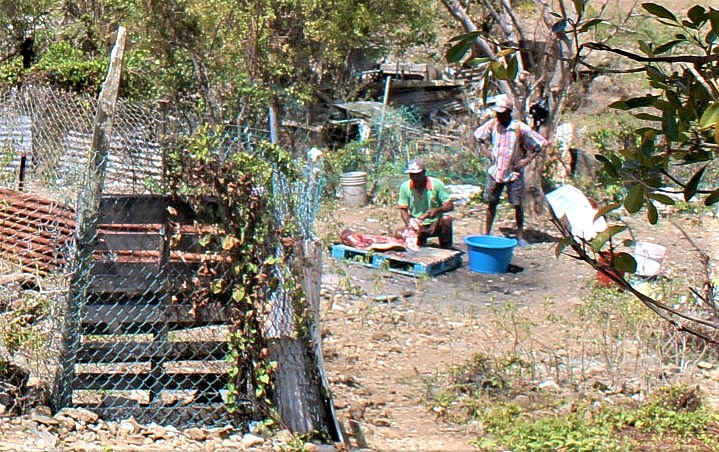
Pigs are killed on Saturday mornings, the hair is burned off the skin and the carcass is cut into pieces on the spot.
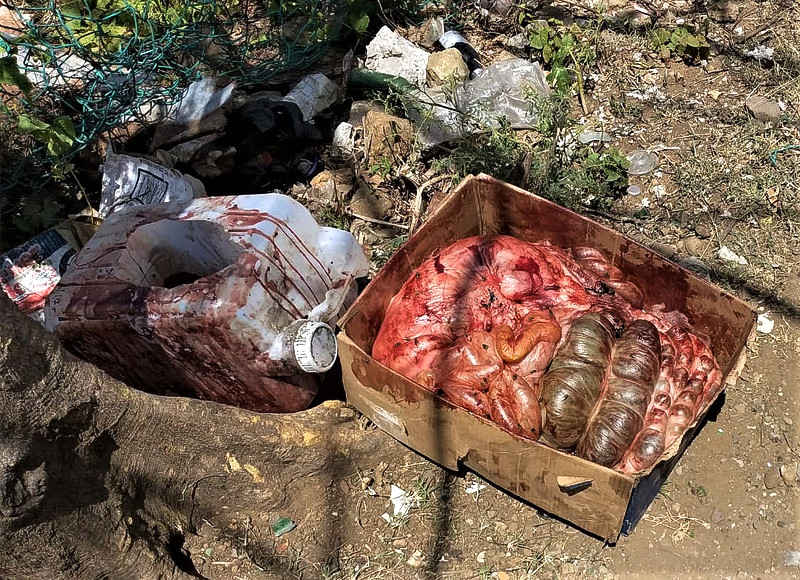
Intestines and blood of a pig slaughtered on Saturday, April 9.
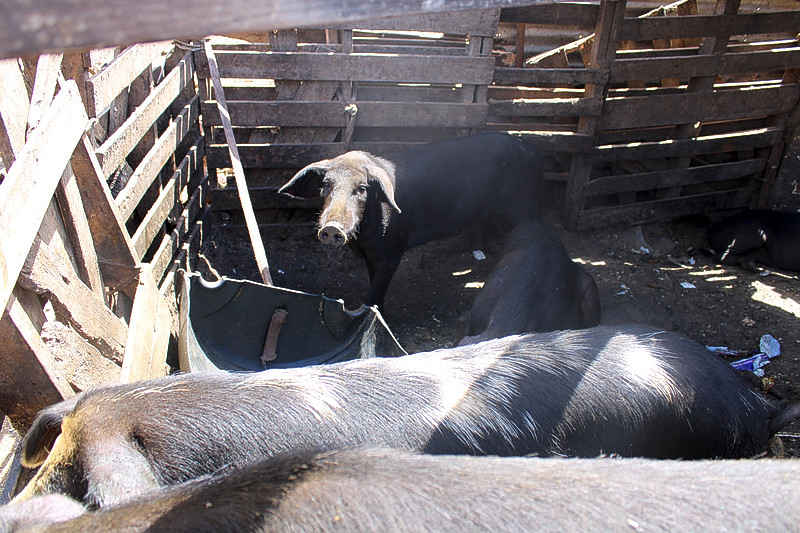
Animals are kept in squalid conditions; the meat is sold island-wide.
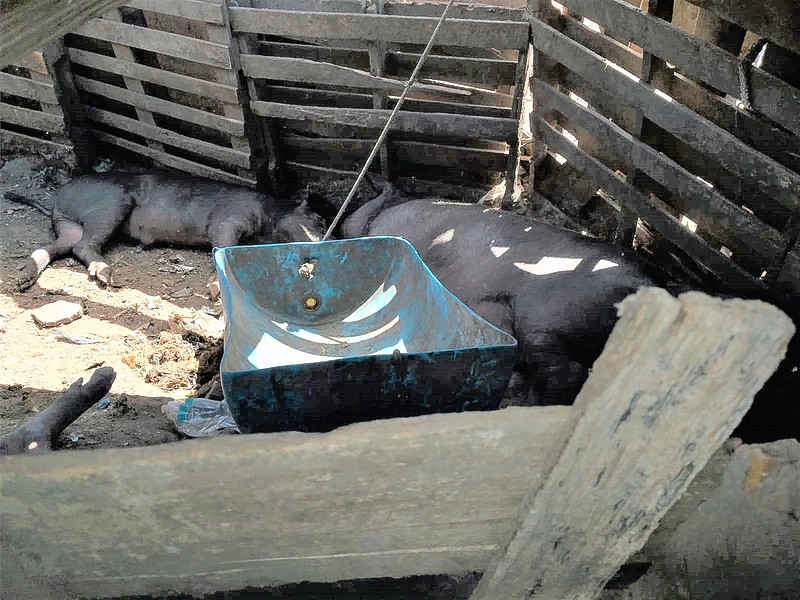
In the middle of the day, the pigs had no access to drinking water.
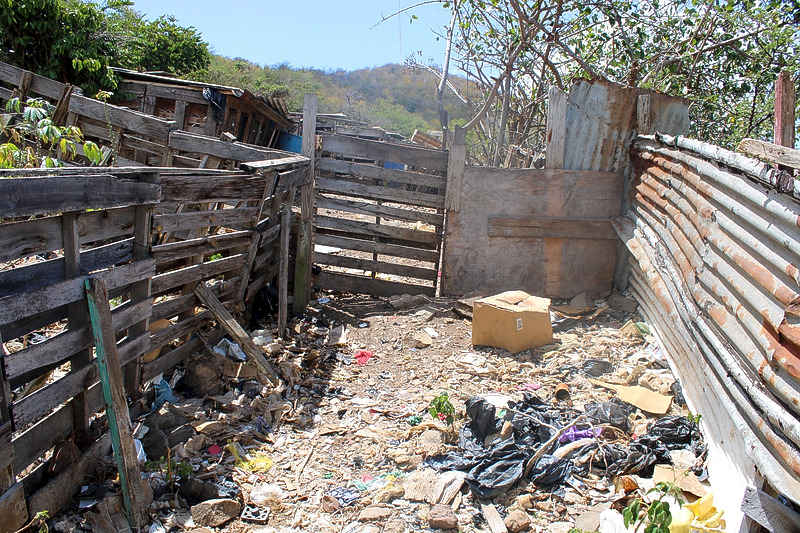
The entrance to the terrain with pig pens.
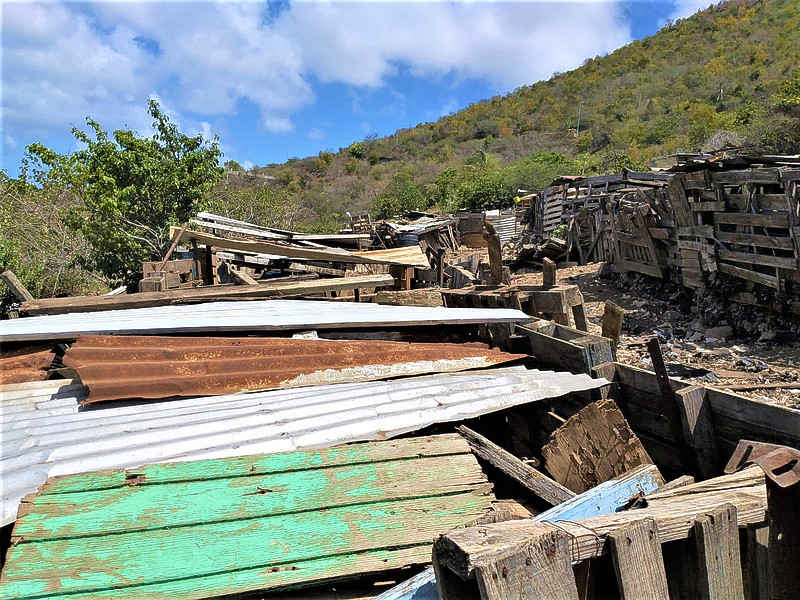
More than 100 pigs confined between pallets, under old zinc plates.
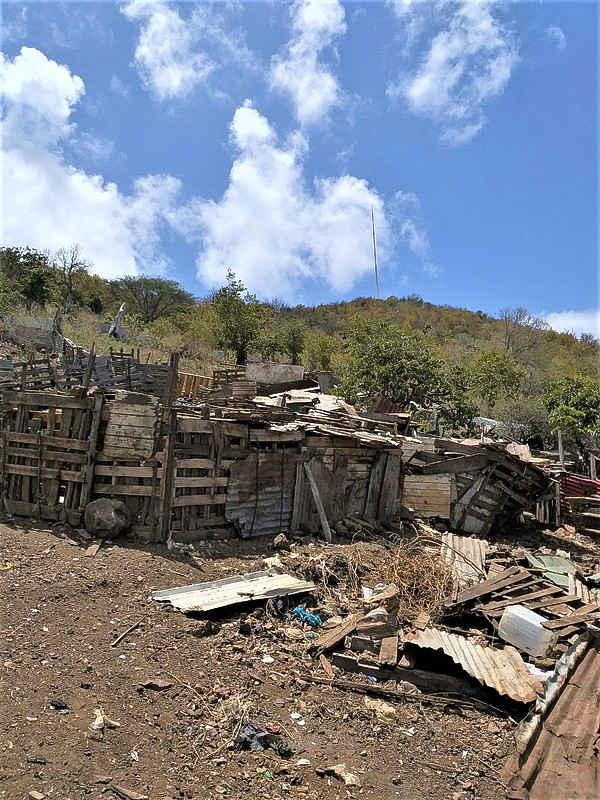
Pig pens are located at the foot of the hill with the St. Maarten national flagpole on it.
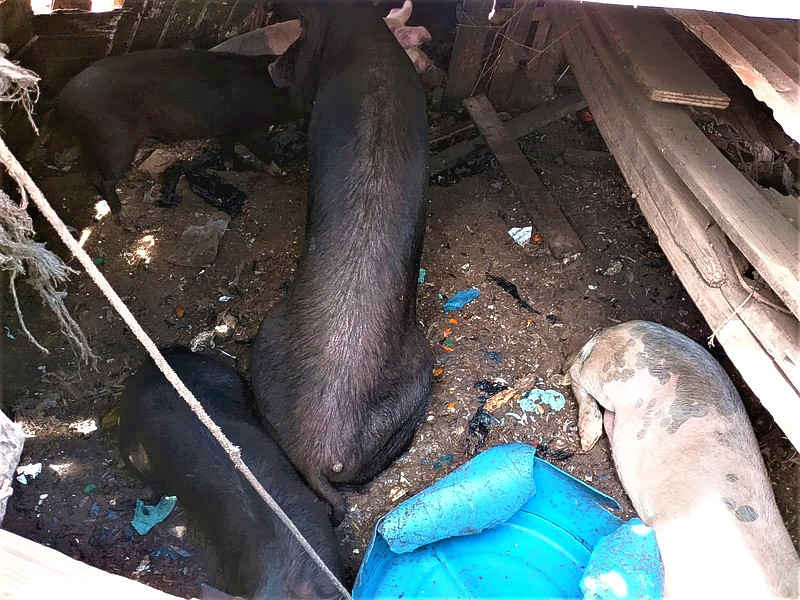
St. Maarten does not have any legal guidelines and regulations for the keeping and slaughter of pigs.



